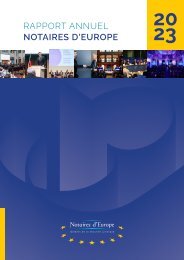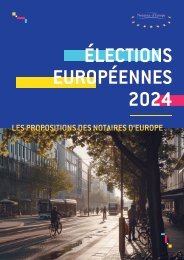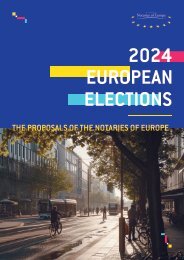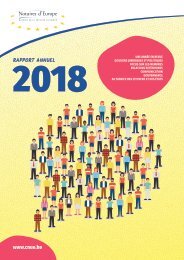CNUE - THE FIGHT AGAINST MONEY LAUNDERING
THE FIGHT AGAINST MONEY LAUNDERING - AN INTERNATIONAL COMBAT, A EUROPEAN CHALLENGE Money laundering is a multifaceted phenomenon. First of all, it is neither static nor temporary: it is constantly evolving, finding new resources in an ever-increasing financial globalisation and the evolution of technology. It is also a phenomenon that is inherently transnational, not only disregarding borders, but using them to blur the trail of successive financial transactions across the globe and obstructing the course of justice. Finally, it is a phenomenon that is on the increase. According to an estimate by the Financial Action Task Force (FATF), the annual volume of money laundering operations is estimated at between 2 and 5% of global GDP.
THE FIGHT AGAINST MONEY LAUNDERING - AN INTERNATIONAL COMBAT, A EUROPEAN CHALLENGE
Money laundering is a multifaceted phenomenon. First of all, it is neither static nor temporary: it is constantly evolving, finding new resources in an ever-increasing financial globalisation and the evolution of technology. It is also a phenomenon that is inherently transnational, not only disregarding borders, but using them to blur the trail of successive financial transactions across the globe and obstructing the course of justice. Finally, it is a phenomenon that is on the increase. According to an estimate by the Financial Action Task Force (FATF), the annual volume of money laundering operations is estimated at between 2 and 5% of global GDP.
Create successful ePaper yourself
Turn your PDF publications into a flip-book with our unique Google optimized e-Paper software.
Essential characteristics of the
Spanish anti-money laundering
system
by PEDRO GALINDO
Manager, Centralised Organisation for the Prevention of Money Laundering
OCP N TARIADO
CENTRALIZED ORGANIZATION
FOR THE PREVENTION OF MONEY LAUNDERING
The anti-money laundering system of the
Spanish Notariat has brought about a
significant improvement on behalf of Public
Authorities, who now have access to:
• A new source of valuable information: the
IUI (‘Índice Único Informatizado’, or ‘Single
Computerised Index’), databases containing
information on the operations performed daily
at all notary offices in Spain.
• A body made up of professional specialists
in anti-money laundering who draw on the
database to analyse and notify risk-related
operations.
It also offers advantages for notaries, who
delegate the handling of a part of their
obligations to a team of experts working in
their name.
Regulations in force: Act 10/2010, on the
prevention of money laundering and of terrorist
financing, and Royal Decree 304/2014, approving
the Regulation of Act 10/10.
The characteristics of this system are described
in Order EHA/2963/2005, governing the OCP
(‘Órgano Centralizado de Prevención’, or
‘Centralised Organisation for the Prevention
of Money Laundering’) in the field of money
laundering within the General Council of
Notaries, and Order EHA/114/2008, governing
compliance with certain obligations of notaries
in the field of anti-money laundering.
01. Anti-money laundering
actions by notaries: evolution
Over recent years there has been an increase
in the regulatory obligations that notaries must
comply with in their professional practice.
As a consequence of the transposition of the
Recommendations of the Financial Action Task
Force (FATF) and EU Directives, the status of
notaries has shifted from being collaborating
parties to designated parties.
43
















